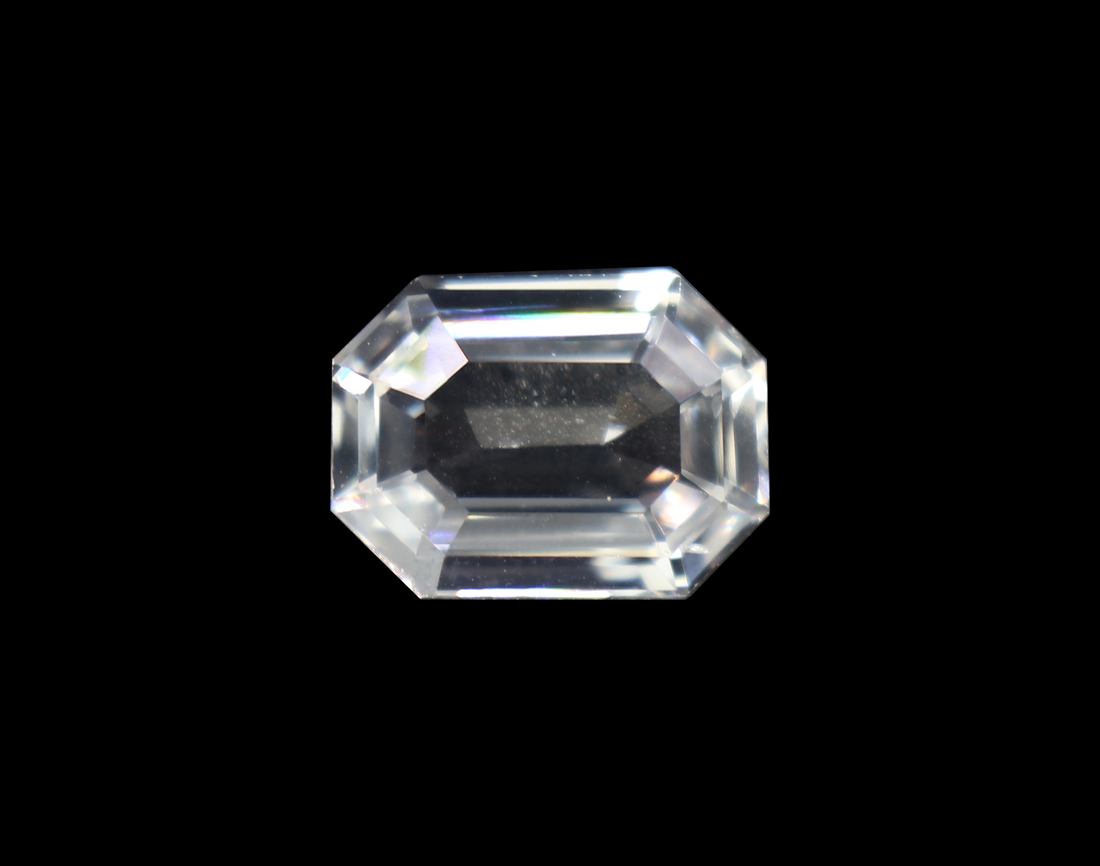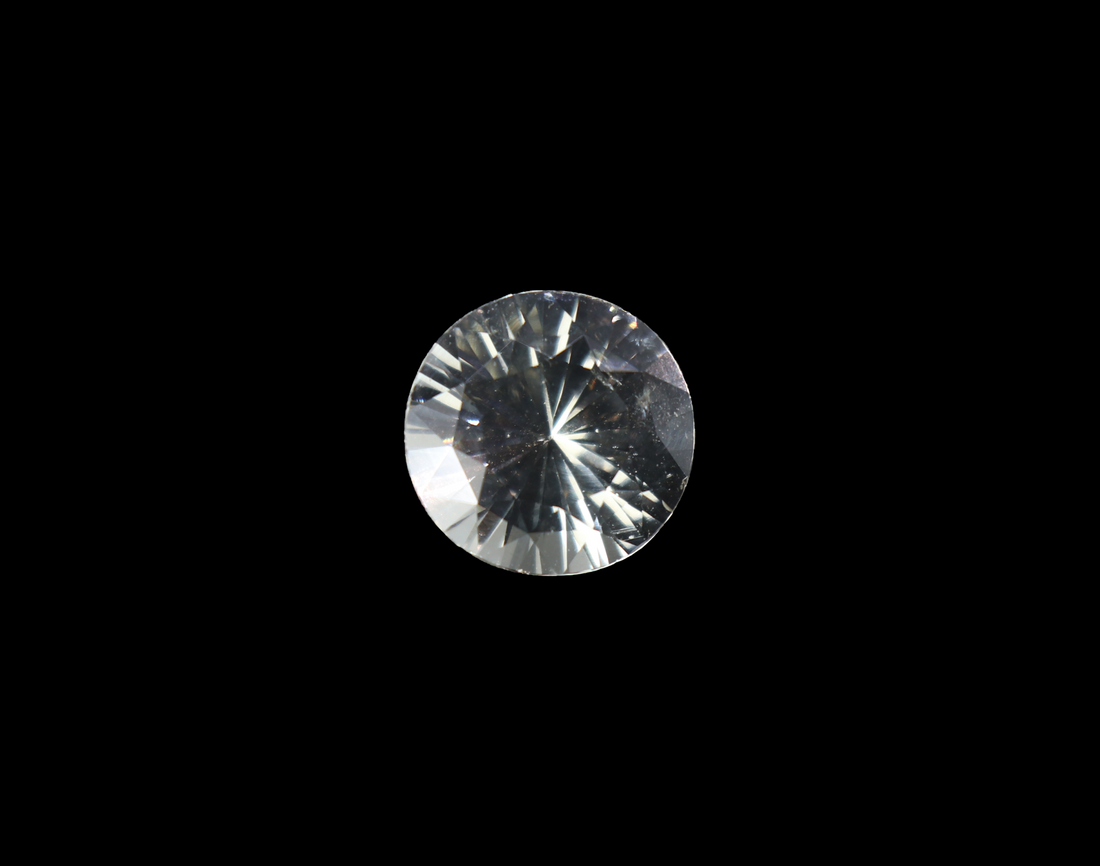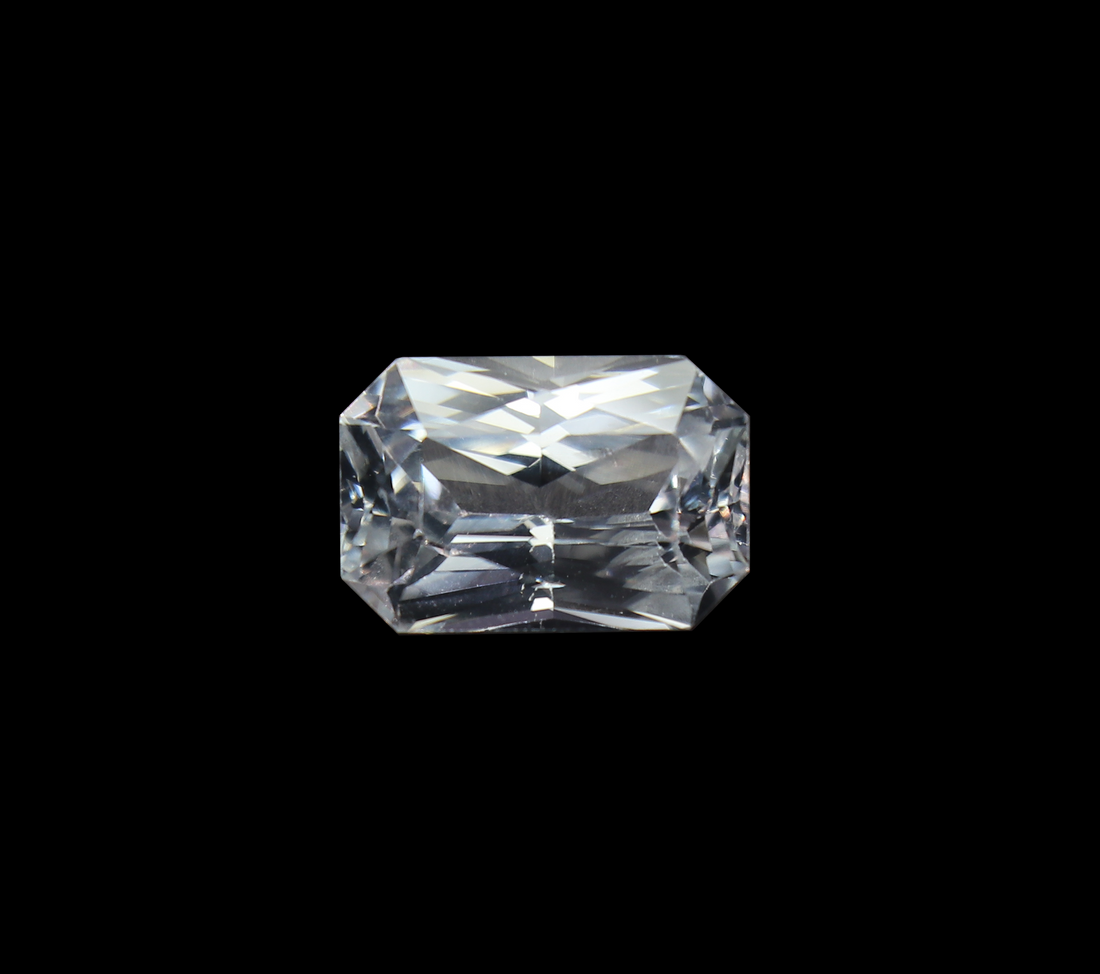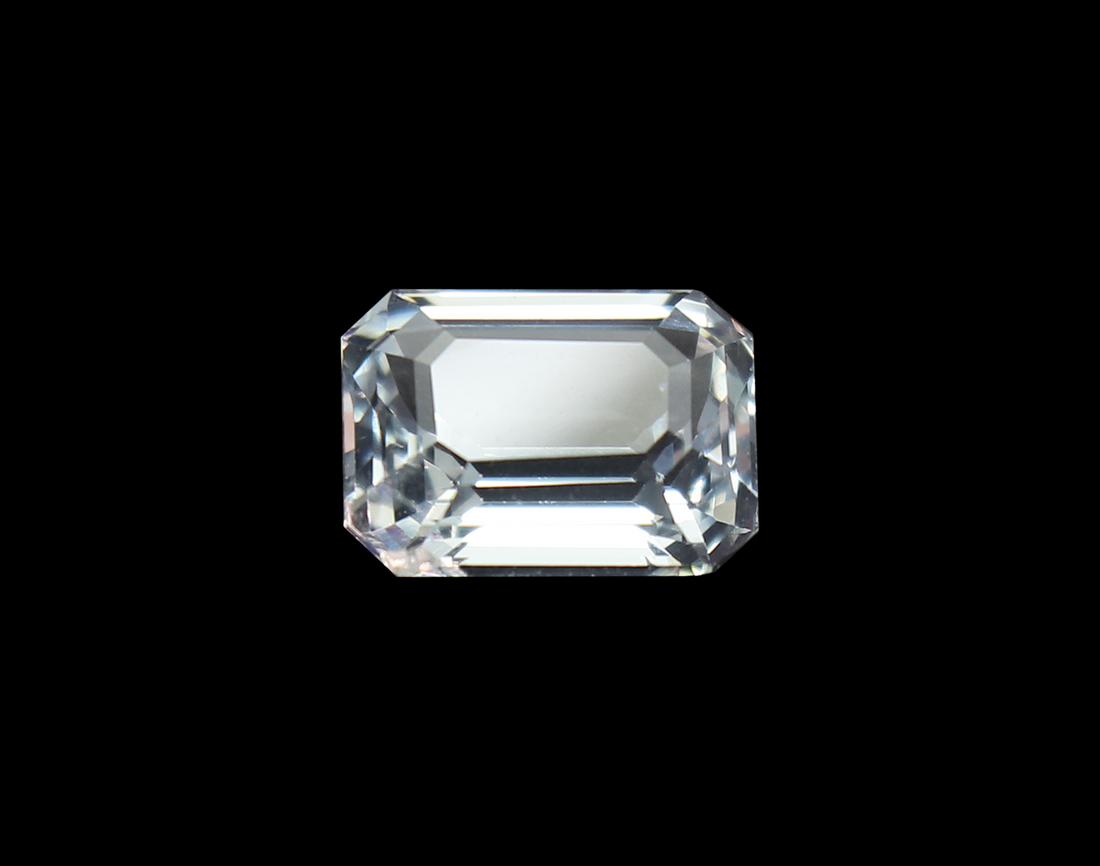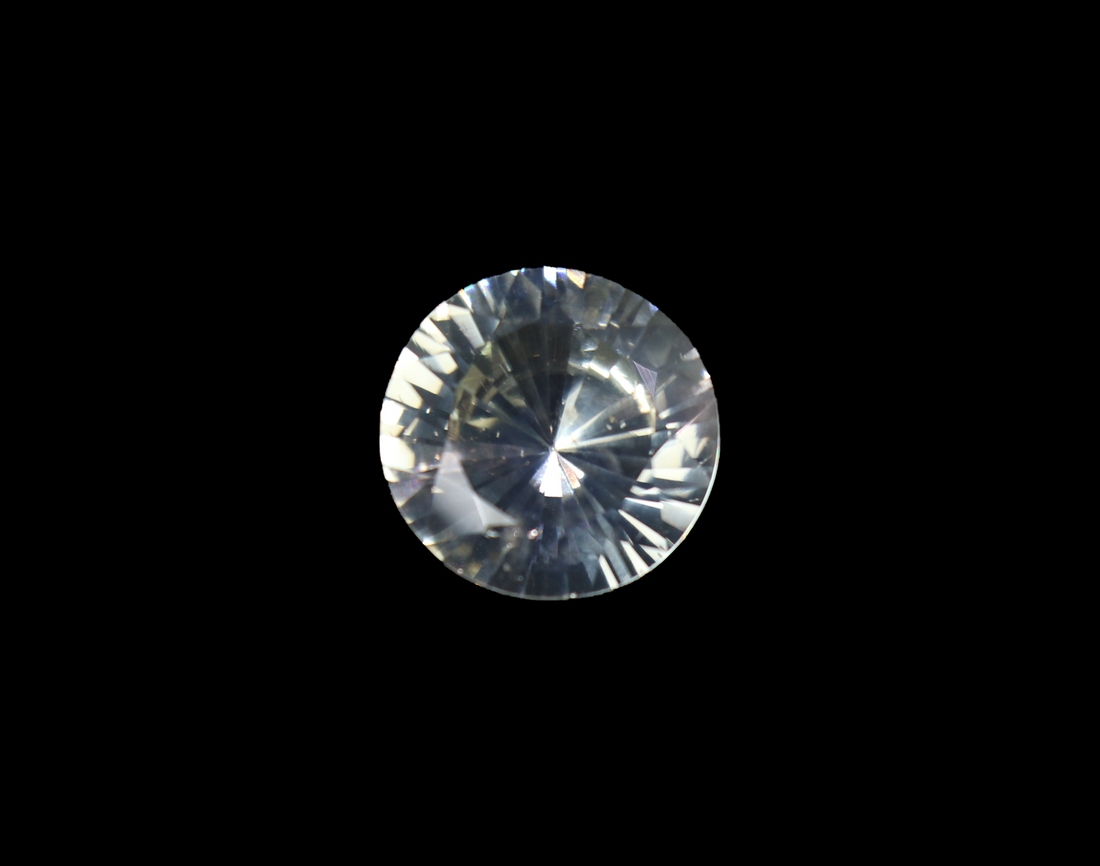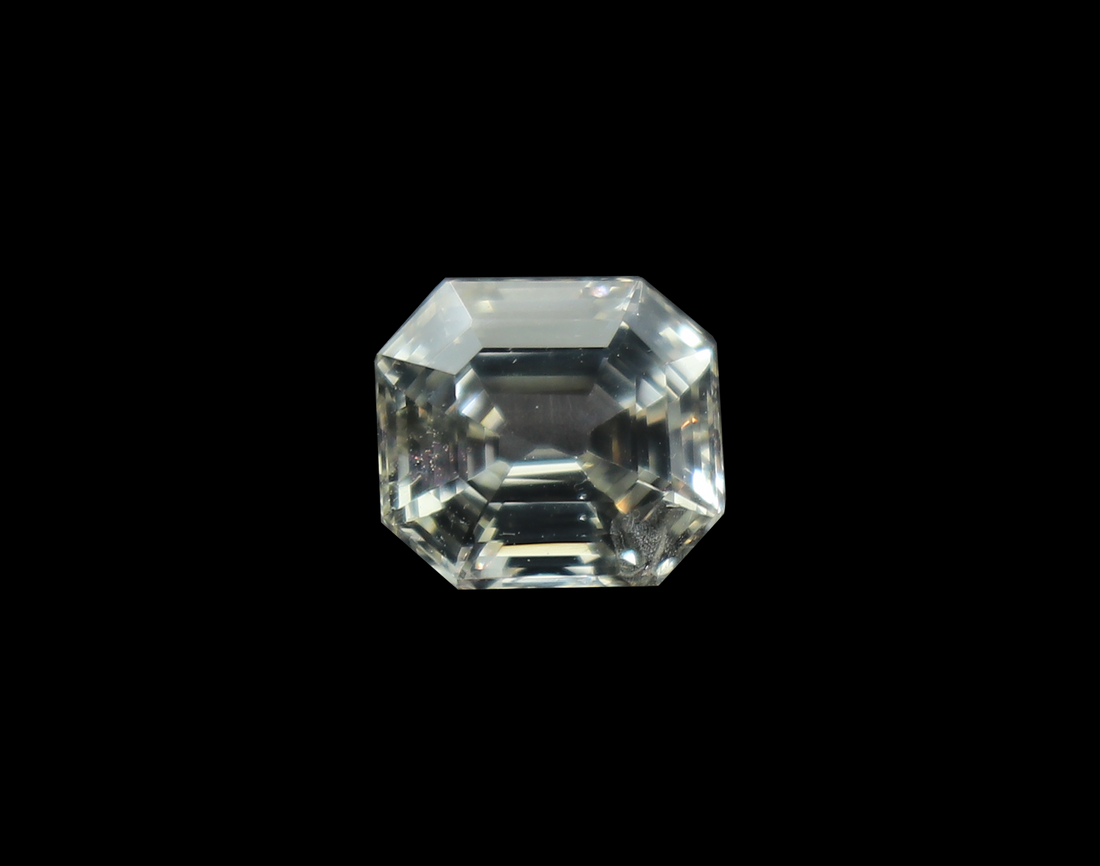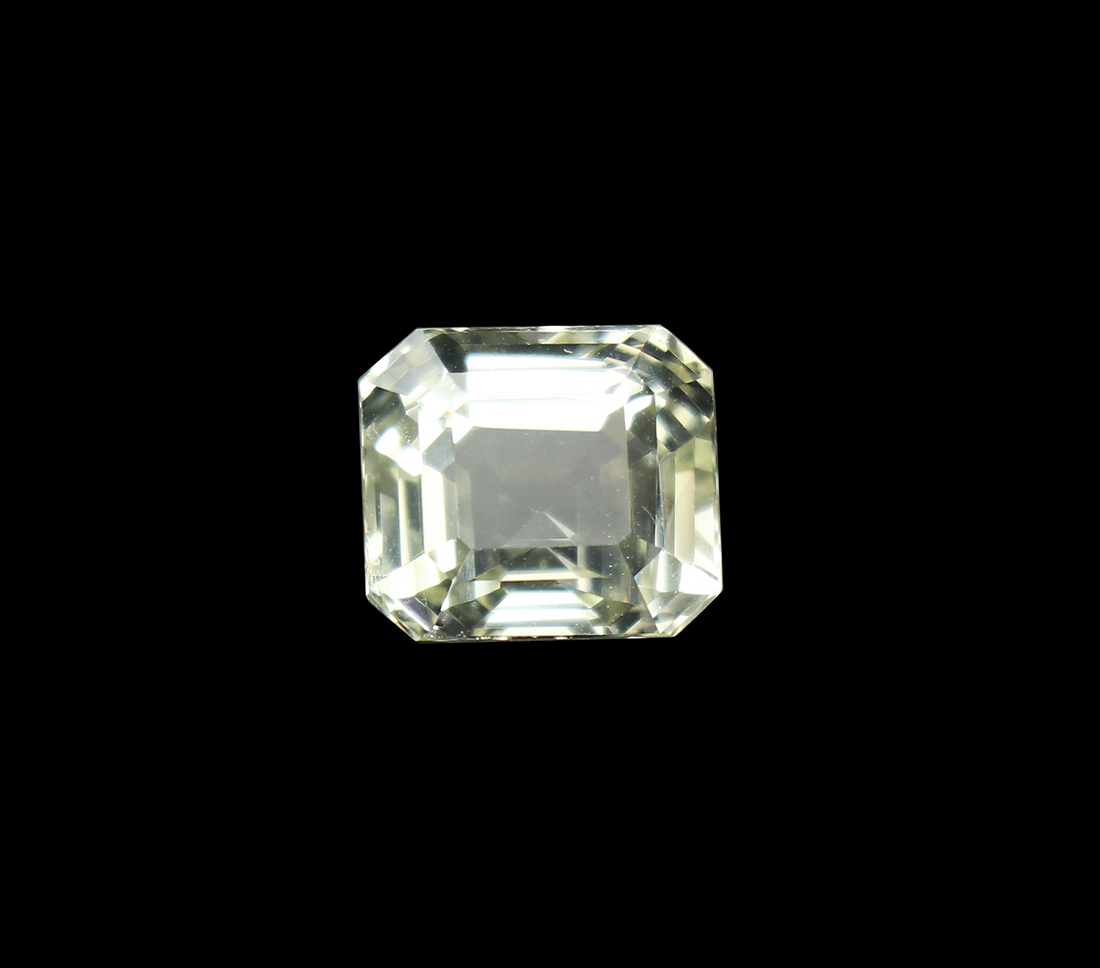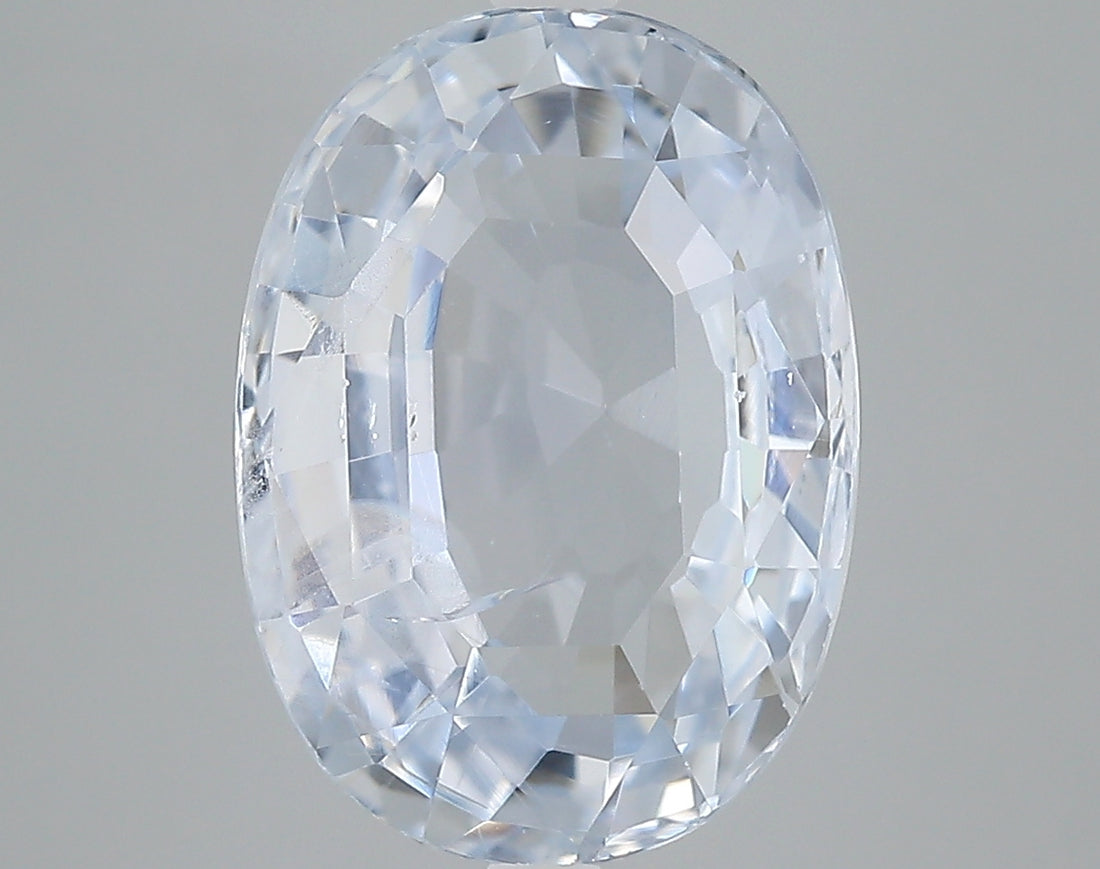This article serves as part of an ongoing series of profiles on the different varieties of precious & semi-precious gemstones. To view the entire list, click here.
Discovering the allure of white sapphires is akin to finding a hidden treasure within the world of gemstones. While colored gems dazzle with their vibrant hues, there's a distinct charm in the understated elegance of colorless beauties. White sapphires, with their ethereal clarity and timeless appeal, stand as epitomes of this refined elegance.
Often misconstrued for diamonds due to their pristine brilliance, white sapphires exude a captivating charm of their own. Belonging to the esteemed corundum mineral family, these gems offer a fascinating alternative to their more renowned white counterparts - diamonds. Their transparent allure lends itself effortlessly to a myriad of jewelry creations, from exquisite rings to captivating adornments fit for any occasion. Join us on an illuminating journey as we delve into the enchanting world of white sapphires. Unravel the secrets behind their celestial beauty and discover why they hold a special place among gemstone enthusiasts worldwide. Here is everything you need to know about white sapphires or the safed pukhraj, as they are known in India.
1. White Sapphires - Formation & Occurrence
White sapphires typically form within metamorphic or igneous rocks. In the case of igneous rocks, crystallization occurs during the cooling process from magma. For white sapphires to develop within igneous rocks, the composition must be aluminium-rich and silica-poor, resembling nepheline syenites, with minimal trace element impurities. In general, the lower amounts of trace elements, the whiter is the sapphire. In metamorphic rocks, these crystals emerge as a result of the metamorphosis of ancient sea beds under the influence of hot, aluminium-rich waters.
Through natural processes like weathering, the bedrock containing sapphires can gradually break down over long periods. This allows the gems to be transported by water and deposited in areas like riverbeds in a process known as alluvial gem deposits. Notably, many white sapphires also undergo certain lab treatments to achieve their clear, colorless appearance.
 A Rough White Sapphire crystal with a subtle blue tint
A Rough White Sapphire crystal with a subtle blue tint
While white sapphires can theoretically form in any location where corundum is present, finding a gem-quality natural white sapphire is quite rare. The small number of untreated white sapphires discovered currently means the market has not had a large enough supply to really highlight and promote their natural beauty on a wide scale. Only a very few natural white sapphire stones come to light each year, given their infrequent occurrence.
2. Where Are White Sapphires Found?
The majority of high-quality white sapphires, particularly those of significant size and clarity suitable for gemstone use, are sourced from Sri Lanka or Ceylon, and are also known as Ceylon white sapphires. The country's rich gemstone legacy contributes to the exceptional quality of Ceylonese sapphires of all types – including yellow, blue, and white sapphires. Sri Lanka or Ceylon is perhaps the most important source of white sapphires, globally.
White sapphires also occur in other countries such as Australia, Thailand, Burma, Madagascar, and Tanzania, but their production quantities are comparatively smaller, and the gemstone quality doesn't typically match that of the Sri Lankan or Ceylonese varieties.
3. The Colour Span of White Sapphires
White sapphires are naturally occurring gemstones known for their colorless or white appearance. Their color span ranges from transparent colorless to slightly milky or cloudy white. These gemstones exhibit brilliance and sparkle, resembling diamonds but without color. The transparency and clarity of white sapphires make them popular choices for various jewelry settings.
What is crucial to note, however, is that a majority of white sapphires available in the market today generally contain tints of yellow or blue. These yellow or blue tints in a white sapphire occur due to the presence of trace elements such as iron, and in general, the lesser is the concentration of such trace elements, the “whiter” or more colorless will the sapphire be. To find an absolutely white or colourless sapphire without any tints is extremely rare, and such specimens command a high market value. Depending on the intensity of these secondary tints in a white sapphire, a gemmological lab may even certify the gem as a blue sapphire (neelam) or a yellow sapphire (pukhraj).
 White Sapphires with a yellow tint (left), blue tint (right), and without any tint (centre)
White Sapphires with a yellow tint (left), blue tint (right), and without any tint (centre)
4. Common Inclusions in a White Sapphire
White sapphires typically have some degree of inclusions visible under close examination, as with many other gems classified as having Type II clarity. However, sellers will sometimes use diamond grading scales more appropriate for stones that are completely clean and clear. Some common features seen within white sapphire crystals include:
- Hexagonal color banding or growth patterns apparent on a microscopic level
- Fingerprint-like marks indicative of the crystallization process
- Minor crystal inclusions such as other gem varieties like zircon, often surrounded by a discolored border
- Feather inclusions and rutile needles known as “silk”
 A heavily-included rough White Sapphire
A heavily-included rough White Sapphire
The highest quality white sapphires will have no discernible inclusions or blemishes to the unaided human eye. As more inclusions become visible, the gem's monetary value and durability against wear typically decline. An inspection under magnification is usually required to properly assess clarity.
5. Common Treatments & Enhancements of White Sapphires
Gemstone treatments are frequently employed to enhance appearance and value, with methods tailored for individual varieties. This holds especially true for white sapphires, as the applied processes can substantially affect their final hue. Some common treatments that a white sapphire or safed pukhraj may undergo, include:
- Heat Treatment/Thermal Enhancement: Heat treatments are frequently employed to enhance the color and clarity of white sapphires. This process involves exposing the gem to controlled temperatures, intensifying its natural hues. It is important to note that this treatment aims to improve color while preserving the stone's intrinsic properties.
- Surface Coating: Some white sapphires undergo surface coating to enhance their appearance. This treatment involves applying a thin layer of material like polymer resins, oil and or wax to the stone's surface to achieve specific visual effects.
- Diffusion: Introduced atoms are incorporated near the surface or throughout the body of the gem to deepen or modify its color tone.
Understanding these treatments is crucial for consumers to make informed decisions. While heat treatments are generally accepted within the industry, surface coatings and diffusion may have implications on the gem's long-term durability and should be disclosed by reputable dealers. Transparency in disclosing treatments ensures that consumers can fully appreciate the authenticity and characteristics of the white sapphire they choose.
| Mineral | Corundum |
|---|---|
| Colour Span | Colorless/White - with tints of blue & yellow |
| Popular Origins | Sri Lanka (Ceylon), Myanmar (Burma), Madagascar, Australia, Tanzania, etc. |
| Mohs Hardness | 9.00 (on a scale of 10) |
| Common Treatments | Thermal Enhancement/Heat Treatment, Surface Coating, & Diffusion |
| Birthstone | September |
White Sapphires - A Quick Snapshot
6. Evaluating the Quality of a White Sapphire
White sapphires are renowned for their transparency and translucency. However, gem-quality white sapphires are exceptionally rare. High-quality safed pukhraj exhibits several distinguishing characteristics, and in general, it makes sense to consider the 4Cs of a white sapphire to evaluate its quality:
- Color: The purest white sapphires show no hints of additional hues or secondary colour tints. Rarely, subtle blues or yellows may be present. The finest qualities closely resemble clear diamonds with their complete lack of color.
- Clarity: As is true with most gemstones, the clearer a white sapphire, the higher is its price. Generally, some inclusions are always present within a white sapphire, and its price is highly impacted by the grade of its transparency. Truly loupe-clean white sapphire gems are incredibly rare, and command a high value in the market.
- Cut: Most safed pukhraj stones are faceted, except for lower quality gems that may be cut as a cabochon. In general, any symmetrical, polishing and cutting style that can maximize the brilliance and scintillation of a white sapphire is ideal. White sapphires are also often cut in a diamond shape – so as to resemble an actual diamond as closely as possible. Proportions influence visual appeal - perfectly balanced designs appear brightest. Custom cuts ensure optimal performance.
- Carat Weight: A standard carat weight range for white sapphires is 3 to 6 carats. Specimens over 7 carats command a considerable size premium depending on their respective qualities, while those that are lighter than 3 carats tend to be cheaper.
 A Diamond-cut White Sapphire
A Diamond-cut White Sapphire
Top-grade white sapphires show exquisite colourlessness, size, transparency, and precision cutting to realize their natural beauty. These rare traits bring the highest appraisals.
7. How Much Do White Sapphires Cost?
The price of white sapphire is determined by several factors, including cut, clarity, carat weight, and color purity. As one of the rarest gemstones found in nature, white sapphires hold significant value in the marketplace. The origin of a white sapphire stone also influences its worth, with gems from Sri Lanka seen as particularly coveted due to their exclusive source. Properly cared for, a white sapphire ring or bracelet can retain a high resale price in the future as well. Most importantly, a white sapphire's clarity and colorlessness are key indicators of quality for astrological purposes. The purest white gemstones with maximum transparency are often considered the finest grade of white pukhraj.
Though less expensive than diamonds, the safed pukhraj stone remains one of the pricier gemstone options available. Globally, prices typically range from $100 to $10000 per carat or higher, depending on quality. Of course, other nuances such as the location of your retailer, the treatments and certification of the stone, etc. add to the costs of your white sapphire.
8. White Sapphires in Astrology
White sapphires make a beautiful addition to any jewelry, whether worn as a ring, pendant, or pair of earrings. They offer significant physical and spiritual benefits. Associated with Venus, and the birthstone for September, white sapphires are often used as astrological substitutes of diamonds. In a general sense, white sapphires are said to bring about the following benefits to their wearers:
- Improves Creativity & Cognitive Ability : As a gemstone of the planet Venus, the white sapphire stone fosters self-awareness and positive thinking. It induces enthusiasm and helps you find success on your path. Connecting you to spiritual realms enhances creativity and cognitive abilities.
- Increases Immunity & Supports a Healthy Life : White sapphire stone strengthens immunity, helping you overcome minor and even major health issues. It also strengthens the nervous system and pituitary glands. Additionally, white sapphires benefit women experiencing pregnancy issues, venereal diseases, infertility, and kidney diseases.
- Attracts Wealth & Status : A wearer of a white sapphire gemstone is believed to be guided toward making wise financial choices and accumulating wealth over time. For Geminis, Libras, and Tauruses, it brings love, prosperity, fame and respect. Unique birthstone jewelry opens opportunities in your career.
- Helps Nurture Relationships : White pukhraj promotes harmony in relationships, allowing holistic growth. It boosts love and affection among friends and family, helps end abusive ties, and keeps you composed on your journey.
 White Sapphires in Astrology
White Sapphires in Astrology
The white sapphire stone is truly captivating, drawing the admiration of many for its elegance and clarity. Associated with the planet Venus, it possesses unique properties that render it a superb alternative to diamonds. If you're looking to buy white sapphire online, look no further than Precious Earth. We offer a stunning collection of ethically-sourced and high-quality white sapphires – where each gem comes with its own lab-certified guarantee of authenticity, as well as a lifetime returns policy.
As a reputed online gem retailer, Precious Earth provides a wide range of beautifully crafted jewelry with certified white sapphires at very reasonable price points. Explore our carefully curated collection of precious and semi-precious gemstones, which includes not only white sapphires but also other gemstones like hessonite, blue sapphire, yellow sapphire, and quartz. Whether you're after everyday pieces or special occasion gems, Precious Earth is here to help you discover stylish options that perfectly match your taste and budget.


